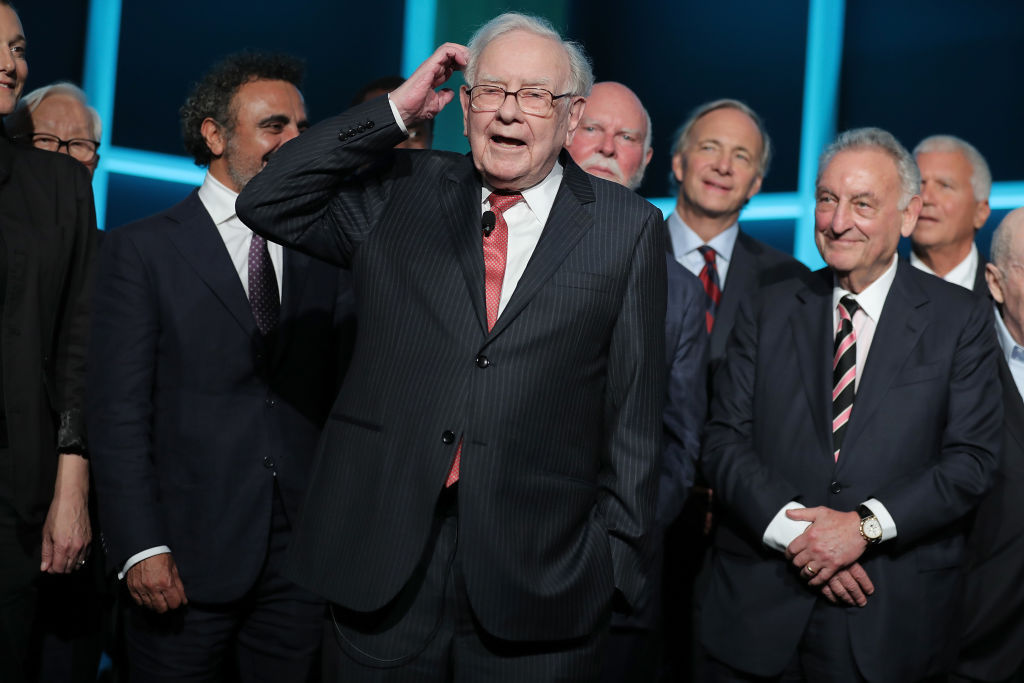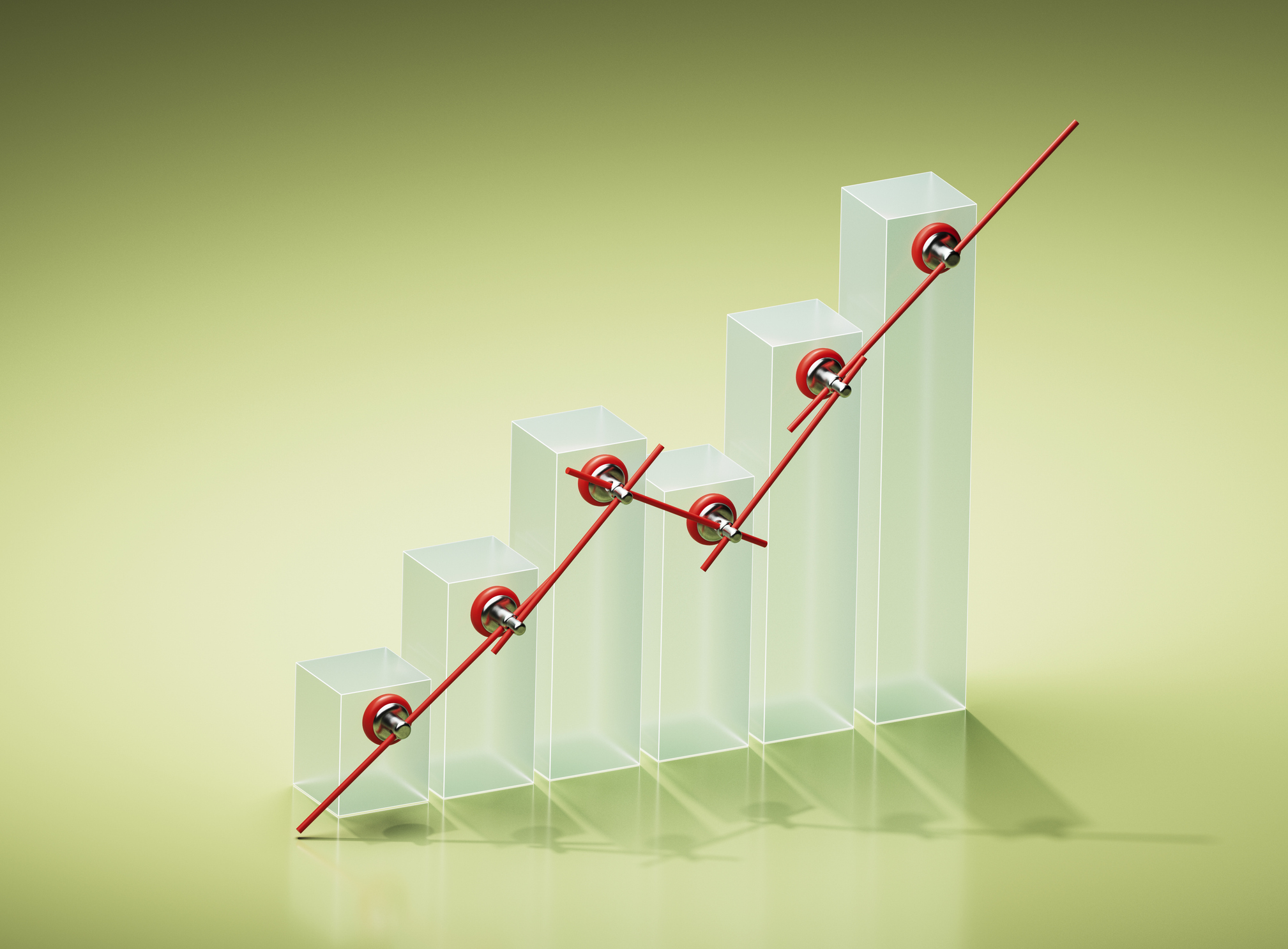Warren Buffett Advice: Why You Should Pick Businesses, Not Stocks
Can you beat the averages? Warren Buffett can. What can mere mortals learn from his success?


Warren Buffett, the chairman of Berkshire Hathaway (BRK.A, BRK.B), is the most successful investor of our time.
His daughter, Susan, worked as my assistant when I was the publisher of a magazine 40 years ago.
Just before she got married, Susie told me she worried that her fiancé's parents had bought a couple of shares of Berkshire stock – and what if it tanked?
From just $107.88 $24.99 for Kiplinger Personal Finance
Become a smarter, better informed investor. Subscribe from just $107.88 $24.99, plus get up to 4 Special Issues

Sign up for Kiplinger’s Free Newsletters
Profit and prosper with the best of expert advice on investing, taxes, retirement, personal finance and more - straight to your e-mail.
Profit and prosper with the best of expert advice - straight to your e-mail.
At the time, the price of the A-listed shares was about $1,000 apiece. Today, it's $771,315 a share. I hope the in-laws hung on.
In his latest annual report, Warren Buffett calculates that the average yearly gain in market value from his acquisition of Berkshire in 1965 through the end of 2024 was 19.9%, compared with 10.4% for the S&P 500 – an astounding difference, matched by no one of whom I'm aware. And Berkshire beat the market in two-thirds of the years.
First, let’s understand Berkshire Hathaway Inc.
Buffett writes that in 1965, it was a "one-trick pony, the owner of a venerable – but doomed – New England textile operation." Buffett switched to insurance and bought National Indemnity, a company he still owns.
Today, Berkshire has three major kinds of investments: cash (a war chest of $334 billion as of December 31, 2024); companies that Berkshire operates and typically owns in full, ranging from GEICO to BNSF Railway to See's Candies; and publicly traded stocks that you can buy yourself.
At last count, Berkshire owned shares of nearly 40 different public companies, but a few dominate, with just five stocks accounting for 70% of the value of Buffett's stock holdings: Apple (AAPL), American Express (AXP), Bank of America (BAC), Coca-Cola (KO) and Chevron (CVX).
Buffett doesn't worry about concentration. He likes to quote the actress Mae West: "Too much of a good thing can be wonderful!"
But the overall portfolio (operating companies plus stocks) is certainly diversified by sector. He owns tech, banks, energy companies, consumer-goods firms, health care, automakers, retailers, media, railroads, charter jets, furniture, homebuilders, insurance and more.
Think like a partner
Buffett's goal, as he wrote in the Chairman's Letter of Berkshire's 2022 annual report, "is to make meaningful investments in businesses with both long-lasting favorable economic characteristics and trustworthy managers." The italics are his – and they’re essential.
Buffett thinks of investing not as buying a symbol with a number attached but as becoming a silent partner in a business.
"Charlie and I are not stock-pickers; we are business-pickers." (Charlie Munger, Buffett's longtime partner, passed away on November 28, 2023; Buffett, the youngster, turned 94 in August 2024.)
The great advantage of owning publicly traded businesses, he writes, is that you can buy pieces of them – from time to time – "at wonderful prices."
Buffett’s mentor, the Columbia University scholar Benjamin Graham, used a metaphor in his 1949 book, The Intelligent Investor, to explain why.
Imagine a character called Mr. Market who is manic-depressive. Some days, he buys stocks in a mood of euphoria, pushing their prices to absurd heights; other days, he is depressed or panicked and sells at absurd depths.
In the latter instances, Mr. Market presents opportunities for you to buy, especially businesses that throw off cash.
In his 2022 annual report, Buffett uses Coca-Cola as an example. Between 1987 and 1994, he bought $1.3 billion worth of shares and never bought any more. In 1994, Coke’s dividend came to $75 million for Berkshire. In 2022, the payout from those shares was $704 million.
"Growth occurred every year, just as certain as birthdays. All Charlie and I were required to do was cash Coke's dividend checks." The value of Buffett's Coke shares grew to $28.7 billion as of September 2024, a 22-fold increase.
Buffett writes that the "lesson for investors" is this: “The weeds wither away in significance as the flowers bloom. Over time, it takes just a few winners to work wonders."
"Over time" is the operative phrase. Buffett’s preferred holding period is forever. He does sell, but not often. In 2022, for example, he unloaded 50 million shares of U.S. Bancorp and made minor reductions in a few other holdings, including General Motors (GM) and Chinese electric vehicle manufacturer BYD (BYD).
When a firm’s prospects change, move your money. As Munger says, "Don't bail away in a sinking boat if you can swim to one that is seaworthy."
The wisdom of patience
Buffett follows the wisdom of Graham: "Day to day, the stock market is a voting machine; in the long term, it's a weighing machine." Translation: In the short term, stock prices might reflect little more than a popularity contest, but eventually, fundamental value will be revealed.
I frequently hear from readers who say that I tell them to invest for the long term, but they are already 70 years old, for goodness' sake!
If you believe your own time horizon is too short for the long term, you might remember that Buffett is patient in his 90s. Or pass the wisdom of patience on to the ones who really need it: your children and grandchildren.
"Having a long attention span and the ability to concentrate on one thing for a long time is a huge advantage," said Munger. To the delight of their shareholders, Munger and Buffett have concentrated on – and we can expect their handpicked successors to do the same.
We shall soon see beginning in 2026 when Greg Abel officially takes the reins as CEO of Berkshire Hathaway. Buffett announced in May that he is stepping down from the position at the end of 2025, but will remain on as chair.
For your own portfolio, you can pick and choose among Berkshire's stock holdings, which are widely tracked by the financial press, including Kiplinger.
Or you can buy Berkshire's own stock. The Class A shares, which have never split, may cost $771,315 each, but the B shares, which were launched in 1996, were recently $514. Berkshire is now the seventh-largest U.S. company by market capitalization (shares outstanding times price).
No longer increasing at twice the rate of the S&P 500 Index, Berkshire over the past 10 years has generated an average annual return of 13.5% vs 12.5% for the S&P 500. Is Buffett losing his touch?
Has Berkshire become so big that its days of beating the market are over? Perhaps, but I'm betting on Buffett, the spirit of Munger and their ability to identify successors who will continue to execute their vision. The stock might even be a bargain.
James K. Glassman chairs Glassman Advisory, a public-affairs consulting firm. He does not write about his clients. His most recent book is Safety Net: The Strategy for De-Risking Your Investments in a Time of Turbulence. You can contact him at JKGlassman@gmail.com.
Note: This item first appeared in Kiplinger's Personal Finance Magazine, a monthly, trustworthy source of advice and guidance. Subscribe to help you make more money and keep more of the money you make here.
Related Content
- 5 of Warren Buffett's Best Investments
- 7 of Warren Buffett's Biggest Misses
- What Is the Buffett Indicator?
Profit and prosper with the best of Kiplinger's advice on investing, taxes, retirement, personal finance and much more. Delivered daily. Enter your email in the box and click Sign Me Up.

-
 Vesting, Catch-Ups and Roths: The 401(k) Knowledge Quiz
Vesting, Catch-Ups and Roths: The 401(k) Knowledge QuizQuiz Test your understanding of key 401(k) concepts with our quick quiz.
-
 Why You Should Pay Attention to Company Guidance
Why You Should Pay Attention to Company GuidanceUnderstanding how corporate profit forecasts affect analysts’ estimates and stock ratings can help you make investment decisions.
-
 How to Protect Yourself and Others From a Troubled Adult Child
How to Protect Yourself and Others From a Troubled Adult ChildThis case of a violent adult son whose parents are in denial is an example of the extreme risks some parents face if they neglect essential safety precautions.
-
 Why You Should Pay Attention to Company Guidance
Why You Should Pay Attention to Company GuidanceUnderstanding how corporate profit forecasts affect analysts’ estimates and stock ratings can help you make investment decisions.
-
 How to Protect Yourself and Others From a Troubled Adult Child: A Lesson from Real Life
How to Protect Yourself and Others From a Troubled Adult Child: A Lesson from Real LifeThis case of a violent adult son whose parents are in denial is an example of the extreme risks some parents face if they neglect essential safety precautions.
-
 To Build Client Relationships That Last, Embrace Simplicity
To Build Client Relationships That Last, Embrace SimplicityAs more automation becomes the norm, you can distinguish yourself as a financial professional by using technology wisely and prioritizing personal touches.
-
 Client Demand Is Forcing Financial Advisers to Specialize: How to Deliver
Client Demand Is Forcing Financial Advisers to Specialize: How to DeliverThe complexity of wealthy clients' needs — combined with AI and consumer demand — suggests the future of financial planning belongs to specialized experts.
-
 Stocks Rise to the Spirit of the Season: Stock Market Today
Stocks Rise to the Spirit of the Season: Stock Market TodayInvestors, traders and speculators are beginning to like the looks of a potential year-end rally.
-
 A Financial Planner Takes a Deep Dive Into How Charitable Trusts Benefit You and Your Favorite Charities
A Financial Planner Takes a Deep Dive Into How Charitable Trusts Benefit You and Your Favorite CharitiesThese dual-purpose tools let affluent families combine philanthropic goals with advanced tax planning to generate income, reduce estate taxes and preserve wealth.
-
 A 5-Step Plan for Parents of Children With Special Needs, From a Financial Planner
A 5-Step Plan for Parents of Children With Special Needs, From a Financial PlannerGuidance to help ensure your child's needs are supported now and in the future – while protecting your own financial well-being.
-
 How Financial Advisers Can Best Help Widowed and Divorced Women
How Financial Advisers Can Best Help Widowed and Divorced WomenApproaching conversations with empathy and compassion is key to helping them find clarity and confidence and take control of their financial futures.